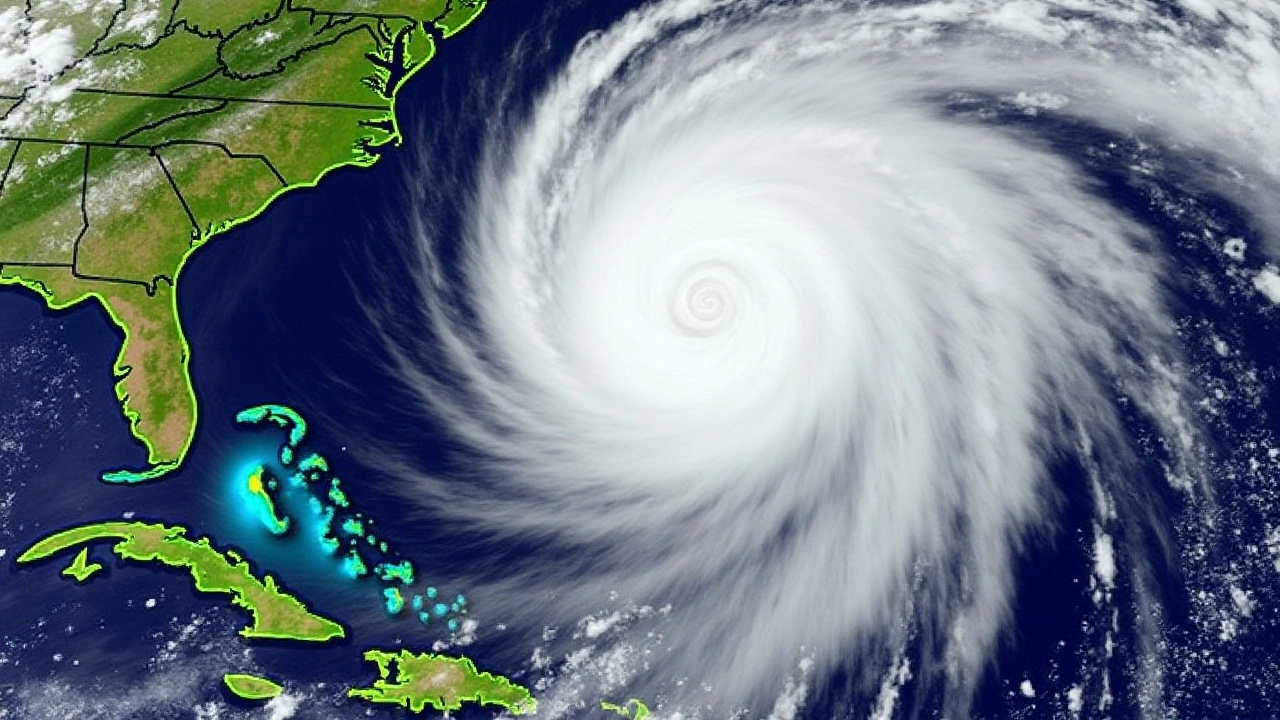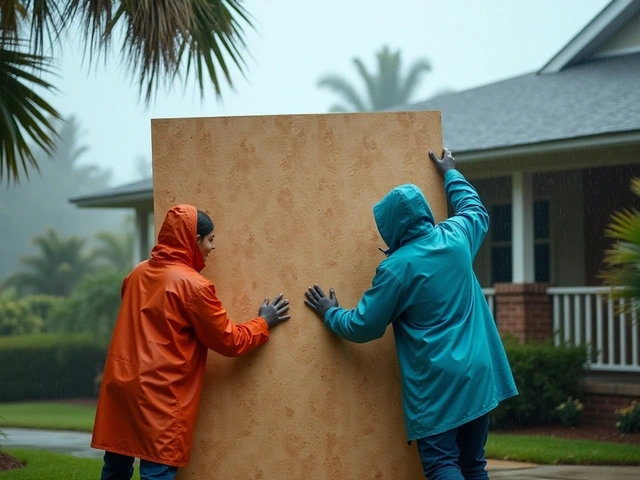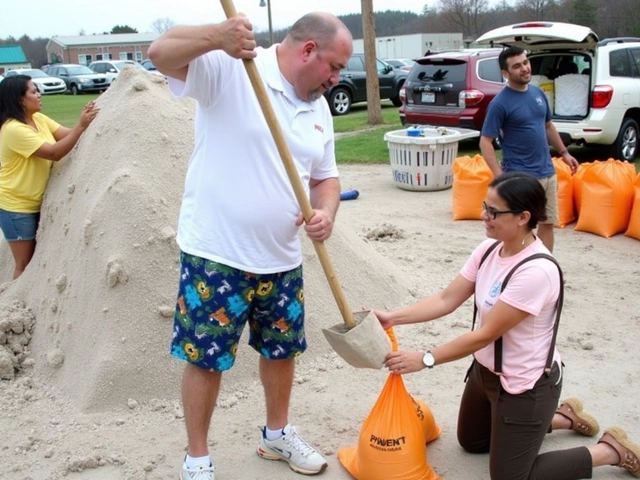
Hurricane Milton's Looming Threat
In what is being described as one of the most significant meteorological events in recent times, Hurricane Milton, categorized as a Category 4 storm, is gearing up to make a formidable landfall in the state of Florida. The magnitude of this storm has compelled authorities to initiate what could well be the largest evacuation effort the state has witnessed since Hurricane Irma back in 2017. The advisories come amidst forecasts from the National Hurricane Center, painting a picture of a storm that, despite initial forecasts of weakening, remains robust and significant. As it approaches, expectedly making landfall by midweek, residents find themselves in a race against time to brace for its impacts.
Preparations and Precautions
The urgency to prepare cannot be overstated as officials ring the alarm for immediate actions on a broad scale. Households up and down the state have begun battlement with supplies, securing homes, and formulating exit plans. The psychological tension is palpable, particularly in regions like Tampa Bay which, for over a century, has narrowly avoided direct hits from major hurricanes. Despite past luck, Hurricane Milton's impending arrival is a stark reminder of the vulnerabilities facing these coastal regions.
Tampa Bay's Vulnerability
In the vibrant and densely populated Tampa Bay area, home to over 3.3 million residents, the fear of substantial damage looms large. Over the past century, the region has skirted close encounters with major hurricanes but has fortuitously escaped the brunt of direct hits. Now, with Milton on a direct trajectory, the reality of potential devastation has gripped this community which stands on the precipice of significant structural tests. Homes, businesses, and infrastructure might face varying degrees of impact, yet the uncertainty bites as predictions and models continue to evolve.
Evacuation Efforts Intensify
Authorities are leaving no stone unturned in urging the populace to heed evacuation directives. The state's emergency management is conducting a massive operation, unparalleled in scale, to move residents to safety. Areas such as St. Petersburg and Gulfport have been highlighted as critical zones where residents need to make swift decisions about evacuating inland. This logistically challenging operation is further exacerbated by the sheer volume of people and resources required to execute a safe and orderly exit.
Community Response
In communities across the state's western coast, the response has been mixed as some residents have started the exodus inland, while others deliberate on staying put. The looming threats of tropical storm-force winds and tornado activity add layers of complexity and urgency to their decisions. Families are seen boarding up homes, while businesses shut down, awaiting further instructions as the winds and rain begin their ominous dance with the coastline.
Tracking the Hurricane
To keep abreast of the developments, live updates and streams have become vital tools for residents. The availability of real-time footage and information channels offers a visual and informational lifeline to those anxiously waiting to see how events unfold. These resources are critical in informing evacuation routes, storm trajectory changes, and advisories for both residents and emergency services.

Looking Ahead
The anticipation of Hurricane Milton's landfall presents a crucial moment not just for Florida but for the broader discourse on how communities respond to natural events of this magnitude. With the likelihood of potential evacuation scenarios, infrastructure tests, and community resilience, there exists a crucial need to evaluate preparedness strategies moving forward. As officials and citizens alike navigate these tumultuous waters, the storm serves both as a reminder and a teacher of the need for continual readiness against the forces of nature.







Hey everybody!!! 🌪️💪 Stay strong, stay safe, and keep those emergency kits stocked to the max!!! Remember, a little preparation goes a loooong way-pack water, non‑perishable food, flashlights, and a first‑aid kit!!! And hey, don’t forget to check on your neighbors-especially the elderly or anyone who might need a hand!!! 📦🚪 Let’s all look out for each other and power through this storm together!!! 🌈✨
Well, isn’t this just the perfect time to test how many people actually read evacuation orders before they’re drenched in a Category 4 nightmare?
Honestly, the whole “brace for impact” spiel feels like a rerun of every hurricane season ever-cue the dramatic music and the same old “stock up on water” advice.
But hey, maybe this year the storm will finally decide to be the star of its own reality TV show and give us something new, like a surprise tornado‑spawned pizza delivery.
Sure, the models keep waving their hands like a magician trying to convince us the storm will mysteriously weaken-spoiler: it won’t.
Meanwhile, the officials are doing the classic “run the drill, hope for the best” dance, which is as comforting as a sunburn on a beach day.
And let’s not forget the endless stream of live feeds-because if there’s one thing we love more than safety, it’s watching high‑definition rain slap against the glass for hours on end.
Perhaps the biggest plot twist is how quickly people will forget the advice once the sky clears, only to be reminded when their roofs start leaking like a busted faucet.
In any case, whether you’re heading inland or staying put, remember: the real drama isn’t the storm-it’s the traffic jam at the exit ramps and the endless debates on whether the three‑hour TV special on hurricane preparedness is actually helpful.
So buckle up, grab your popcorn, and enjoy the spectacle-because nothing says “Florida fun” quite like a swirling mass of wind and water to spice up your weekend plans.
Stay safe, stay sarcastic, and maybe, just maybe, keep an eye on that “evacuate now” banner before it turns into a meme.
Listen up, folks! This is not a drill, it’s a full‑blown catastrophe waiting to unleash chaos on Tampa Bay, and anyone still debating evacuation is clearly ignoring basic meteorology! The forecast isn’t being vague; it’s screaming Category 4, with wind speeds that will tear roofs off like cheap pizza boxes! Stop misusing words like “minor inconvenience”-the reality is catastrophic damage, flooding, and possibly fatalities! I can’t stand the sloppy grammar in those “stay safe” posts-what’s wrong with proper punctuation? A period, a comma, and a clear call‑to‑action! If you’re still debating, you’re a danger to yourself and others! Pack your essentials-water, meds, battery‑powered radio-and move inland now! No more dawdling, no more excuses! The storm doesn’t wait for your schedule, and neither should you! Get out before the streets turn into rivers, before the wind turns your house into a matchbox! This is a warning, not a suggestion-act now.
Yo, looks like Milton’s about to roll in-best to grab what you need and head inland, stay chill.
Hey guys, just a friendly heads‑up-if you’re on the coast, make sure your evacuation route is clear and you’ve got a backup plan. No need to panic, just stay organized and help each other out. Keep your phones charged and listen to official updates. Let’s keep it respectful and safe for everyone.
Team, let’s approach this from a resilience‑engineering perspective-activate your emergency operation protocols, secure critical infrastructure, and ensure redundancy in communications. We can mitigate systemic risk by cross‑checking supply chains for water, power, and medical kits. Remember, community cohesion is a force multiplier; peer‑to‑peer support networks can dramatically improve survivability metrics. Stay optimistic, stay prepared, and let’s turn this challenge into a case study of adaptive capacity.
Skipping evacuation is morally indefensible.
Wake up, America!!! This so‑called “national emergency” is just a distraction engineered by globalists to control the populace!!! They’re using Milton as a smokescreen for mass surveillance roll‑outs-don’t be fooled!!! Prepare your own food, water, and power; the grid will be compromised the moment the storm hits!!! Stay vigilant, stay armed, and resist the narrative!!!